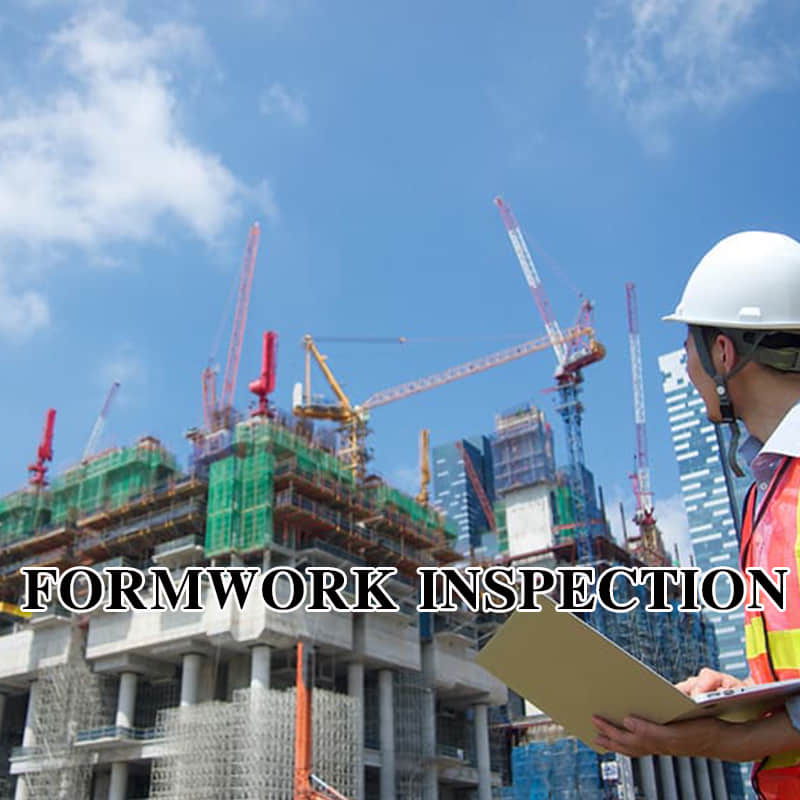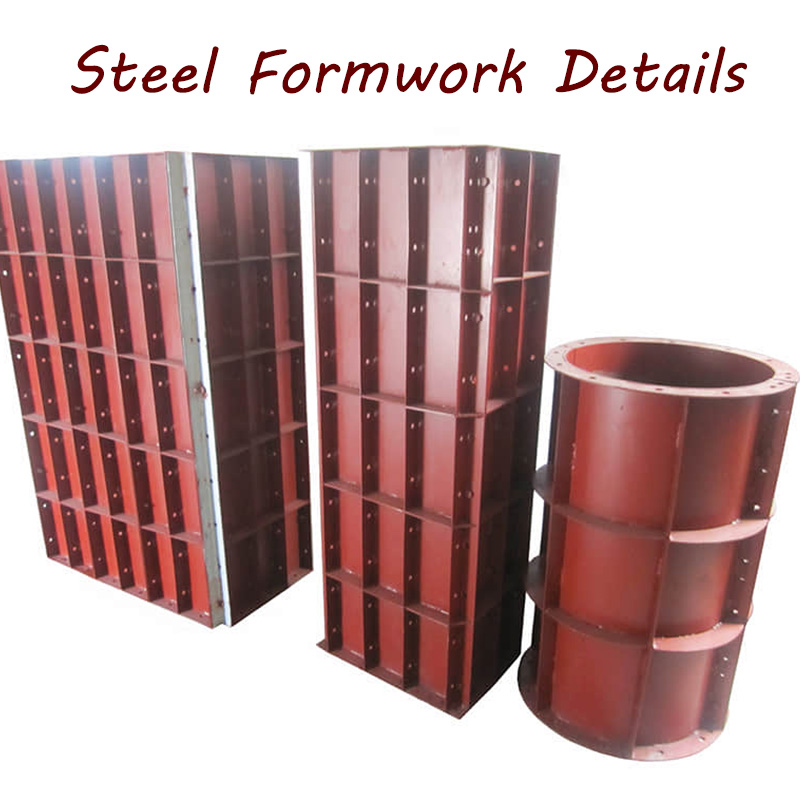A Complete Guide to Steel Formwork Details
Mar 04, 2025
Steel formwork is an essential tool on construction sites and is indispensable for the formation of concrete structures. Next, we will conduct an in-depth analysis of steel formwork to let you know more details of steel formwork, including the characteristics, types, advantages, and disadvantages of steel formwork, etc., to help you better choose steel formwork.
Introduce of Steel Formwork
Steel formwork is a formwork system that helps concrete take shape. It is assembled into a mold of a specific shape so that the concrete can be formed into the required geometric shape and size after pouring. Steel formwork usually consists of steel panels, support systems, connectors and adjustment devices, and has the characteristics of high strength, high precision and high reuse rate.
Types of Steel Formwork
There are many types of steel formwork. The following are several common types of steel formwork:
Wall Steel Formwork
Wall formwork consists of large steel plates and support systems including back ribs, bolts, etc. The large size of the formwork can reduce the joints and improve the flatness and finish of the wall. It can be single-sided or double-sided, and the double-sided formwork is used to cast the walls on both sides at the same time.
The wall formwork has high strength, can withstand the lateral pressure of concrete, has a high reuse rate, and is suitable for large-scale wall construction, such as for casting concrete walls, such as the exterior walls, interior walls, retaining walls, etc. of buildings.
Floor Steel Formwork
Floor formwork consists of steel panels and a support system (such as steel beams, brackets, etc.). The formwork needs to bear the deadweight and construction load of the floor concrete, so the support system must be stable, usually connected to the wall formwork or column formwork to form an integral casting system.
The floor formwork can be quickly assembled and disassembled, and the construction speed is fast. The surface flatness is high, suitable for direct use as a floor finish, such as the floor plate and platform plate of a building.
Column Steel Formwork
Column steel formwork usually consists of steel formwork surrounded by four sides to form a closed space. The height and size of the formwork are customized according to the design size of the column. Usually it needs to set tension bolts or clamps to prevent the formwork from deforming during concrete pouring.
Column steel formwork is easy to disassemble and assemble, suitable for repeated use, and can ensure the geometric dimensions and surface quality of the column. It is often used in frame structure buildings, bridge piers, decorative columns, etc.
Beam Steel Formwork
Beam steel formwork consists of bottom formwork and side formwork to form a U-shaped or L-shaped structure. The bottom formwork needs to bear the dead weight and construction load of the beam, so the support system must be stable. The side formwork is usually connected to the floor formwork or column formwork to form an integral casting system.
Beam steel formwork can ensure the geometric dimensions and surface quality of the beam. It has high construction efficiency and is suitable for large-scale beam construction. It is often used in frame structure buildings, bridges, industrial plants, etc.
Foundation Steel Formwork
The foundation steel formwork is customized according to the form and size of the foundation, and usually consists of a steel panel and a support system. The foundation formwork needs to withstand greater concrete pressure and construction loads, so the support system must be stable. The assembly of the formwork needs to be coordinated with the steel bar binding and embedded parts installation.
The foundation steel formwork can ensure the geometric dimensions and surface quality of the foundation and is suitable for foundation construction of various complex shapes. Such as independent foundations, strip foundations, raft foundations, etc. of buildings.
How to Choose the Steel Formwork to Use
Choosing the right steel formwork for your project depends on several factors:
Project Size
Large projects or large concrete pours may require heavier duty forms to handle the weight and volume of the concrete.
Concrete Type and Casting Method
The type of concrete being poured (e.g. lightweight or high strength) and the casting method (e.g. pumped or gravity fed) will influence the formwork you choose.
Finish Quality
Steel forms generally provide a smoother finish than wood alternatives. Steel is an excellent choice if a high-quality finish is required for concrete.
Reusability
Some forms are better suited for reuse, making them ideal for projects involving multiple pours. Steel’s durability ensures that the formwork will last for several cycles.
Budget and Cost Efficiency
While steel forms tend to have a higher upfront cost, they can save money in the long term due to their long life and reusability. The cost should be weighed against the projected duration.
Merit of Steel Formwork
Steel formwork have lots of advantages :
High Strength and Durability
Steel forms are extremely strong and can withstand the harsh conditions of concrete pours, providing better support than wood alternatives.
Precision and Accuracy
Steel panels are precisely engineered to achieve a high-quality and consistent finish on concrete surfaces.
Reusability
Steel forms are extremely durable and can be reused multiple times on different projects. This can reduce waste and overall costs in the long run.
Faster Construction
Steel formwork systems are quicker to assemble and disassemble than traditional methods, resulting in faster construction times.
Improved safety
Due to the structural integrity of steel, workers have a safer working environment, reducing the risk of formwork collapse or failure during construction.
Environmentally friendly
Since steel formwork can be used multiple times, it produces less waste and is more sustainable than single-use formwork systems.
Disadvantages of Steel Formwork
Despite the numerous advantages of steel formwork, there are some limitations:
High Initial Cost
Steel formwork requires a significant upfront investment compared to other materials, such as wood or plastic. This may make it less attractive for smaller projects or budget-conscious builders.
Heavy Weight
Steel formwork can be heavy and difficult to handle. This requires additional labor or machinery for transportation and installation, adding logistical complexity to a project.
Corrosion Risk
Steel is susceptible to corrosion over time, especially in wet or harsh environments. Proper care, including regular maintenance and coatings, is necessary to prevent rust and deterioration.
Design Complexity
While steel formwork offers flexibility, designing custom formwork for complex structures may require advanced expertise, which can result in increased design and labor costs.
Conclusion
Steel formwork is an important concrete construction tool in modern construction projects, providing strength, precision and durability to concrete structures. Its role provides good protection for project efficiency and safety. Whether you are building a high-rise building, a bridge or an infrastructure project, steel formwork has many advantages, including reusability, improved safety and reduced construction time. By understanding the comprehensive information guide of steel formwork, you can make a more appropriate choice for your construction project.
As a steel formwork wholesaler, AJ Building has a history of more than 25 years of steel formwork construction. If you are looking for high-quality and reliable solutions, please contact us for a free consultation.
FAQ
Is steel formwork environmentally friendly?
Steel formwork is environmentally friendly and reusable, thus reducing construction waste and is a sustainable choice.
How do I choose the right steel formwork for my project?
Choosing the right steel formwork requires consideration of factors such as project size, concrete structure requirements, reusability requirements and budget. Consulting a professional supplier can help you choose the most suitable type.
Read More
Steel formwork|PPT --SlideShare
Why Choose Steel Formwork? Advantages & Applications --Forming America

